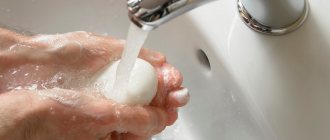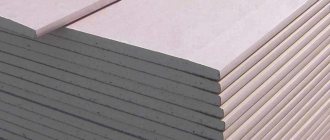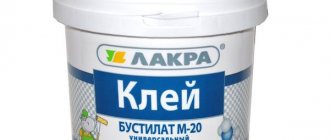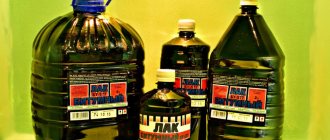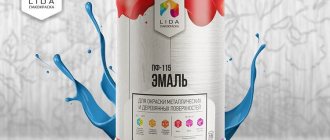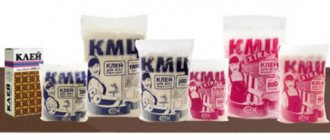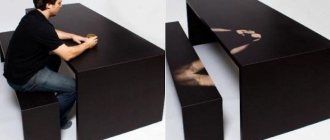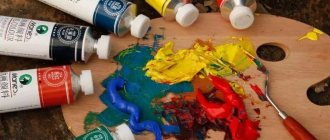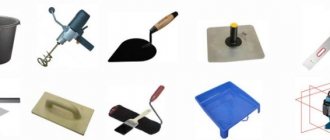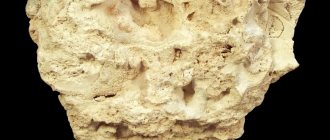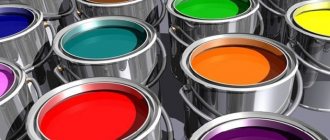its differences from solvent 646 and kerosene
Solvents are actively used not only in industry, but also in the domestic sphere. Their main purpose is to purify materials. The question often arises: is it possible to degrease surfaces with white spirit, and how to do it correctly?
Which is better: ours or imported?
Despite the fact that the production technology is the same, imported white spirit has a weaker odor (and higher prices). This is due to the fact that the product goes through more purification stages, which remove volatile compounds. It’s good - work is easier, there are no headaches and all other symptoms.
Each has its own advantages and disadvantages
The bad thing is that during the cleaning process the dissolving power decreases. This means that fluid consumption will be greater. This is when we talk about adding to paints or mastics. The second point is that the stains will be scrubbed off worse. This is if you use the substance as a stain remover. On the other hand, if you try to remove a stain from fabric with low-purity white spirit, it will be extremely difficult to get rid of the smell (note that repeated washing does not help). It’s clear that the less odorous the liquid, the easier the problem is to solve. Perhaps for this reason, some manufacturers produce this type of solvent in several degrees of purification (for example, Tikkurilla - with blue and yellow labels). Different tools for different tasks.
As a solvent
Despite the fact that the dissolving ability of white spirit is average, it is often used for diluting many compositions to the desired consistency. In this case, a solvent is introduced into the composition, and not vice versa. Mix thoroughly until smooth. As a solvent , white spirit is used with the following compositions:
- oil paints;
- antibacterial impregnation for wood;
- drying oil;
- alkyd enamels;
- alkyd varnishes;
- bitumen mastics;
- rubber mastics.
It is better to work with gloves, use a wooden stick
When combined with paint, white spirit reduces its viscosity. The composition is better applied and distributed, consumption is reduced. But it is worth remembering that after drying the surface will be glossy. If you need a matte finish, look for another solvent.
Dilute to a more liquid state with white spirit and putty. But only those that have an appropriate basis:
- ML - melamine,
- M - oil- and alkyd-styrene;
- PF - pentaphthalic;
- MP - urea;
- VN - divinylacetylene.
White among car owners as a means of removing car mastics. Cleans any bitumen-based compounds and oil shale mastics. Well removes lubricants that are used to treat parts to protect against corrosion (car preservatives). Just remember that the liquid is highly corrosive. That is, you should not allow prolonged contact with the surface. If a puddle has formed, it must be quickly removed and the area wiped dry.
Easily removes stains from car paintwork
What is solvent 646?
The list of materials that are needed when carrying out paint and varnish work is large, these are paints, rollers, brushes, primers, and acetone-containing mixtures. Solvent 646 is a liquid with a characteristic odor, colorless, with a yellowish tint, which is a mixture of special substances that easily dissolve any type of paint in order to achieve the required consistency of the composition. The reagent can be added to primers and putty mixtures. A high-quality solvent must be homogeneous, without sediment or cloudy impurities. The chemical additive is sold in various containers:
- metal containers;
- glass bottles;
- plastic canisters.
Solvent composition 646
The unique formula of a liquid product, proven over the years, designed to dissolve various compounds, is controlled by GOST. Due to the fact that the composition of the multicomponent solvent 646 includes hazardous substances, some manufacturers are guided in production by technical specifications, according to which their content in the product is greatly reduced. According to standards, 1 liter of liquid includes the following components:
- 100 ml butyl acetate;
- 150 ml ethyl alcohol;
- 100 ml butanol;
- 80 ml ethyl cellosolve;
- 70 ml of acetone;
- 500 ml of toluene.
Features of working with solvent
Degreasing with white spirit is as simple as possible. To do this, you need to take a sponge or rag, moisten it a little in the liquid, and wipe the area to be treated. There is no need to completely saturate the material. Further work is carried out after the surface has dried.
The compositions of white spirit and R-646 are often confused. This is not the same thing; there are differences between solvent 646 and white spirit. They are produced under different GOST standards and have slightly different areas of application. More often, R-646 is used to dilute nitrite-based paints and enamels, and white spirit is used for oil-based compositions, varnishes, and putties.
It is important to follow safety precautions when working with these substances. If they are violated, symptoms of drug intoxication may appear, so protective equipment must be used.
Areas of application
The solvent (Nefras-S4-155/200) is widely used in the paint and varnish, rubber, wood chemical, light and food industries. It is actively used in mechanical engineering, automobile manufacturing, and in the production of roofing and bitumen materials. Popular in everyday life on construction sites and during repairs due to its universal functionality and low price.
The solvent is used for diluting paints, enamels, varnishes and other paints and varnishes on oil and alkyd bases, putties ML, PF, VN, MC, MS grades, primers, drying oils.
White spirit is used to impart the required viscosity to mastics and antibacterial agents for wood processing.
Effectively degreases and cleans parts of industrial equipment, cars, various surfaces for further coating and painting.
Application area
White spirit is used mainly as a solvent for any fractions of oil, sulfur compounds, nitrogen, and oxygen. It can also dissolve vegetable fats. The ability to dissolve fats is used if it is necessary to clean the surface before priming, applying paint, etc. It is actively used before applying paint and varnish coatings (LPC) to metals.
READ The difference between a frame house and a frame panel house
Before painting metal, it should be treated with white spirit - the paint will stick better
Physico-chemical parameters and release form
Heavy gasoline solvent white spirit is a transparent, colorless or yellowish liquid with a sharp, specific odor reminiscent of kerosene. Today, a number of foreign manufacturers offer a solvent that is more environmentally friendly and completely odorless through additional purification. The difference between a domestic product and its imported analogue lies in the higher speed and efficiency of the first and the greater environmental friendliness of the second.
In terms of its chemical composition, white spirit is a mixture of aromatic (up to 16%) hydrocarbons with aliphatic hydrocarbons, which form a gasoline solvent in their compound. This product of the petrochemical industry received its English name, White Spirit, due to the high volatility of vapors and transparency of the liquid.
The solvent is obtained at the stage of distillation of the diesel fraction of oil, when white spirit is distilled off from the bottom product of the column - diesel fuel.
Considering the fact that volatile vapors, provided the room is well ventilated, are quickly eliminated , and almost every home craftsman has personal protective equipment such as rubber gloves and a respirator in his arsenal, you can sacrifice some convenience in order to obtain a better result. The traditional, aromatic-rich version of the solvent, although it has a pungent odor, however, works better and gives a better result. The currently produced brand 1050, offered by a number of manufacturers, has a weaker odor, which makes it possible to work much more comfortably.
White spirit is offered to buyers in glass and plastic containers - bottles or more practical canisters for transportation. For small volumes (5 l, 10 l), products are produced in durable plastic containers. Solvents are also available for sale in glass containers (up to 1 l) and metal, which is preferable for large volumes required by industrial facilities.
For everyday use, it is most convenient to purchase small bottles with a volume of up to 500 ml, since the shelf life of the solvent contained in such containers is approximately three years. For long-term storage (up to 10 years) of large volumes, durable plastic and metal containers (barrel, tank) can be used. The solvent of the described series is not prone to the formation of sediment and does not change its chemical characteristics throughout the entire shelf life.
Storage and use
White spirit is a flammable substance (category 2), auto-ignition temperature is 270°C. Vapors mixed with air create an explosive mixture. Given these features, pay special attention to the storage location. This solvent should be kept in a dark, cool, ventilated room, out of reach of sunlight. There should be no heat sources nearby, including heating devices. The shelf life is usually indicated on the can, but it is not important. If there is liquid inside and not jelly, it can be used.
Packaged in plastic bottles and canisters
When opening and operating, the following requirements must be met:
- Work outside or in a well-ventilated area.
- It is unacceptable to be near open flames or sources of sparks.
- When opening the container and mixing the compositions, do not use devices that can create a spark.
- White spirit begins to evaporate at a temperature of 20°C. To ensure quick drying of paint, mastics, putty, you need to work in the warm season or in a warm room.
- If solvent is spilled in a room, open windows and doors, collect as much as possible, and remove it from the room. Wipe the area where white spirit was spilled with a rag. To remove grease stains, you can use detergents that dissolve fats. If you spill it on the street, fill the puddle with sand, which you then take out.
- In case of fire, do not extinguish it with water. Use foam, sand, powder, felt.
According to the degree of impact on the human body, it is classified as a substance with low danger. In case of contact with skin, it can cause burning, dermatitis and allergic eczema. Therefore, it is better to avoid even short contact. The best thing you can do is wear gloves. If you have to work indoors for a long time, it makes sense to wear a respirator.
Storage of solvent 646
Caution should be used when working with all paints and thinning chemical mixtures. Some substances in P 646 can cause serious damage to the skin and mucous membranes. During storage and operation of this substance, you must remember: the third hazard class of solvent 646 means that the multicomponent solution is moderately hazardous and requires special storage procedures.
- The container containing paint solvent 646 must be hermetically sealed.
- Sunlight and heating devices in the room where the composition is stored are unacceptable.
- The shelf life of solvent 646 is 12 months. subject to all storage conditions.
- Experts warn that the composition can dissolve some types of plastic, this should be taken into account when storing it.
Anti-rain for glasses
There are special means for protecting car windows; in addition, you can make an anti-rain protection system yourself. Such tools will make life much easier for any driver. Special compositions for glass processing have good water-repellent properties; they are popularly called “anti-rain for glass.” According to the manufacturers, after applying the product to the glass, it creates a thin transparent layer with hydrophobic properties. This layer prevents water droplets from being retained on the glass, and also helps the wipers and the oncoming air flow to more easily and quickly remove water from the surface of the glass. When applied to glass, anti-rain fills all scratches, creating the smoothest surface, and there is nothing for water drops to catch on, and the hydrophobic substances included in the composition repel water, reducing the area of interaction of water drops with the surface of the glass, which also contributes to the rapid drainage of water.
Comparison of the surface of glass treated with anti-rain and not treated with it
The modern market offers many water-repellent compounds from various manufacturers and price ranges. Almost all chemical compositions of anti-rain include silicone polymers and a solvent; the composition may also include a fixative, which ensures the wear resistance of the composition. The protective layer on the glass after applying the composition can last up to six months.
Advantages of applying anti-rain to car windows:
- Improved visibility during rain and sleet;
- When driving at a speed of more than 60 km/h, the wipers can be turned off - they will not be needed;
- Convenience of washing glass; stains from midges, frost, etc. can be easily removed from them;
- Extending the service life of wipers;
- Reduced anti-freeze consumption;
- Reducing the glare of headlights from oncoming cars.
- Some inexpensive products have a strong, unpleasant odor
- Cheap products have a short-term effect: from several days to a couple of weeks (or until the first wash).
Acetone, amyl acetate, ethyl acetate
Solvents that are used in the case of nitro paints. Since these substances mix quite easily with water, it is necessary to ensure that it does not get into them: this can cause whitening of the transparent film. If you add butyl alcohol solvents to the composition of these substances, the gloss of the varnish film will significantly improve.
White Spirit
Solvent gasoline is a product of petroleum distillation. Its physical characteristics are as follows: a transparent, colorless liquid. Application area: dissolution of nitro paints and some types of resins, as well as oil paints. In the case of paints and varnishes, the dosage of white spirit must be limited to 10% of the total mass of the paint and varnish material.
Specifications
The main technical parameters are described in GOST 3134-78 “White spirit. Technical conditions" in clause 1.2:
Deviations from GOST:
- the mass fraction of aromatic hydrocarbons can be 17% for white spirit obtained from Stavropol, Shaim, Dagestan, Volgograd oil, rich in aromatic compounds;
- the mass fraction of sulfur can be increased to 0.04% for Kazakh and Turkmen oil;
- Xiol volatility was exceeded to 2.5...4.5 for Kazakh, Volgograd, Turkmen, Shaim and Mangyshlak oil;
- The density of white spirit may exceed that established by GOST up to 0.9 g/cm³ due to the uncertain composition of the distillation product of oil and low-sulfur gasoline.
It is worth noting that some parameters can be adjusted by the manufacturer in agreement with the customer, for example, the presence of acids and alkalis in the composition, plate testing.
The recommended consumption of white spirit per 1 m² during degreasing is 100-150 grams per 1 square meter.
The solvent does not freeze, does not gain viscosity over time, and its shelf life is practically unlimited.
We're glad to see you!
Ordinary consumers have little information about paints and varnishes and solvents. Meanwhile, these are the questions most often asked at retail outlets: what is better to choose or how to dilute paint in the best way. fundamental differences between white spirit and solvent: however, different compositions affect the range of applications of both products. If you want to get a quick effect from using this or that product, you need to listen to the opinion of experts.
- for dissolving solid, liquid or gaseous substances,
— when working at a given temperature and dosed volume of funds.
READ What solution is used to lay tiles on the stove?
White spirit belongs to one of the groups of inert solvents. They make it easy to work with fatty substances and mineral oils.
The product has proven itself well as a composition for washing brushes after working with oil, alkyd and pentaphthalic enamels. White spirit is used as a degreaser.
Solvent 646 is a complex active composition of acetone, toluene and other organic components for working with paints and varnishes. A stronger and faster effect is the main difference between this substance.
White spirit or solvent 646: high quality, plenty of choice
S12 Thinner for NC materials
Area of application: dilution of NC varnishes and primers until the required working viscosity is obtained. It is also a clear, colorless liquid. Has an average drying speed.
Dichloroethane
The next solvent that needs to be mentioned is. This colorless, slightly flammable liquid has a chloroform odor and also tends to turn yellow when exposed to sunlight. Precautions when using this thinner: a mandatory condition when working with this substance is the use of rubber gloves, since the thinner, due to the specific chemical composition, can significantly affect the skin of your hands.
Solvent
Technical coal is a mixture of aromatic hydrocarbons that are obtained in coke production during the rectification of purified fractions of crude benzene. Physical characteristics of the solvent: it is a transparent, colorless liquid, it is available in three grades - A, B, C, which differ in the following parameters: boiling point, density, small fluctuations in the content of chemicals such as sulfur and phenols.
Solvent is a high-quality paint solvent, however, due to its toxicity, solvent is not as popular as turpentine . Solvent is used only for diluting pentaphthalic and glypthal paints.
Difference between solvents and thinners
Thinners are solvents that are not capable of dissolving a given polymer alone, but when introduced into a polymer solution do not destroy its structure.
In fact, mixtures of solvents are very often used; their alternative name is numbered solvents.
Thus, solvent R-4 (contains acetone and toluene) is suitable for dissolving and diluting alkyd paints and enamels based on chlorinated polymers.
Water-based paints and varnishes can only be diluted with water. You also need to remember that water must be poured gradually and in very small doses, otherwise the viscosity will decrease too much.
Characteristics of solvent 646
Among solvent masters, the most famous is solvent 646 (P-646).
It was first made in the 20th century. At first it was used for diluting nitro-varnishes and nitro-enamels; its versatility was discovered much later, and it began to be used in diluting paints and varnishes to working viscosity, in the cleaning procedure for painting equipment and working tools. The many components that make up this solvent play a significant role in the ability to dissolve most organic substances.
Solvent 646 is a colorless/slightly yellowish liquid and has a specific odor. The percentage of the following substances is included in its composition: toluene (50%), ethanol (15%), butyl acetate (10%), butanol (10%), ethylcellosolve (8%), acetone (7%).
Solvent 646 is a fairly strong solvent, therefore, when using it as a working substance, it is necessary to observe safety precautions and be extremely careful when using it.
After drying, the paint coating acquires additional shine.
Solvent 649 is used to dissolve nitrocellulose-glyphthalic film formers.
The choice of thinner depends on the working situation; the main determination parameters are the type of paint and varnish material and the ambient temperature during application of the material.
New solvents with index +
Solvents +
At every enterprise that is successfully developing and does not stand still, work is underway to expand the range of products. This is necessary to meet growing and changing consumer demand. When introducing a new product to the market, it is necessary to comply with the requirements of all regulatory authorities. The manufacturer also needs to remember that the average consumer needs not only high-quality products that meet all the requirements of inspection and licensing authorities, but also their availability. Therefore, LLC KIROVOGRADPOSTACH developed, introduced and launched the following solvents:
“Acetone +” “Kerosene +” “Gasoline Galosh +” “White spirit +”
Many may think: “What’s new here?”, because the names are familiar and understandable to many. Let's figure this out.
1. “Acetone+”
Acetone is an interesting solvent. Miscible with a wide range of media from polar water to non-polar mineral oil. Used as a solvent for epoxy and natural resins, oils and other materials, and also degreases surfaces. It is one of the components of many other solvents, even nail polish remover! But. Modern legislation classifies acetone as a precursor. Precursors are substances used in the manufacture of narcotic drugs and psychotropic substances. All operations (storage, transportation, trade, technical use) with it require licensing and strict accounting. This entails restrictions on turnover and additional costs, which in turn affects the cost of the product. Many retail outlets have refused to sell precursors because... are unable to meet the requirements of regulatory authorities regarding the conditions for controlling the circulation of precursors and do not want to spend money on purchasing a license. The same fate befell other products, which contained more than 50% of precursors such as diethyl ether, acetone, and toluene. Therefore, KIROVOGRADPOSTACH LLC decided to develop a new product “Acetone+”. The content of precursors in it is less than 50%, so it is not subject to licensing. But this does not affect its characteristics and scope of application.
2. “Kerosene+”, “Gasoline Galosh+” and “White spirit+”.
Kerosene is a flammable, clear (or yellowish) petroleum fraction obtained through the process of rectification or direct distillation. Its boiling point is from 150 to 250 degrees. It is used as aviation fuel, petroleum solvent, fuel for firing porcelain and glass, and fishing bait. In the 20th century, kerosene was used for lighting and heating. Many devices were adapted from it: lighting and blowtorches, kerosene stoves and kerosene gases. White spirit (English White Spirit - literally "white spirit" (white spirit); aka Nefras-C4-155/200 or Stoddard solvent) - gasoline solvent, a mixture of liquid aliphatic and aromatic hydrocarbons, obtained by direct distillation of oil, sometimes with additional hydrotreating. Density at 20 ° C is not more than 0.795 g/cm3, begins to boil at a temperature not exceeding 165 ° C, boils away in the range of 155 (160) - 200 ° C, sulfur content is not more than 0.025% ( for pure white spirit). At the same time, the mass fraction of aromatic hydrocarbons should not exceed 16%. It is used mainly as a solvent in the paint and varnish industry, for diluting oil paints, alkyd enamels and varnishes, mastics based on bitumen and rubber. It dissolves all petroleum oils well. fractions, vegetable oils and fats, organic compounds of sulfur, oxygen and nitrogen.Although white spirit is not usually sold as a fuel, it can be used as an alternative to kerosene for portable stoves, since it is just a light grade of kerosene. Galosh gasoline is a low-boiling fraction of dearomatized gasoline from direct distillation of low-sulfur oils. Named after the name of a person who actively used this substance in his work and was engaged in its sale, which was recorded on the market. Galosh gasoline is also of petroleum origin, but has a special fractional composition. It is rich in aliphatic compounds, unlike White Spirit and Kerosene. It is volatile, smells nice and dissolves oils and fats perfectly. But. Kerosene, Galosh Gasoline, White Spirit and a number of other petroleum solvents are subject to excise tax under modern legislation. A common feature is the possibility of using these materials as fuel (gasoline additives), which is clearly irrational, along with the chemical composition of motor gasoline itself. The excise tax tries to regulate such use, but, alas, in the direction of increasing the cost of the above-mentioned industrial solvents. By its nature, excise taxes are economic taxes designed to regulate consumption. For example, the excise tax on cigarettes is intended, in essence, to regulate the consumption of tobacco products. However, in Ukraine, the excise tax has lost its essence and turned into a fiscal levy, the purpose of which is solely, in fact, like all taxes in Ukraine, to fill the budget.
Therefore, KIROVOGRADPOSTACH LLC decided to provide an alternative to consumers and developed a number of new products: “Kerosene+”, “Gasoline Galosh+” and “White Spirit+”. They are not inferior to excise analogues either in properties (here we mean not the numerical values of quality indicators, but technological properties for coating technology) or in areas of application. But they are very attractive in price.
Is it possible to replace the solvent with white spirit?
You can replace white spirit with either one of the solvents, light or heavy, or a mixture of them.
Sources:
https://skolkogramm.ru/info/rastvoritel-646-v-bak-obzor-sravnenie-i-rekomendaczii https://elednevnik.ru/rastvoritel-646-i-uajt-spirit-otlichija/ https://novoe -info.ru/chem-otlichaetsya-uayt-spirit-ot-646/
Use of thinner in everyday life and industry
Widely known both to many home craftsmen and housewives, and to professional painters, also referred to as nefras (petroleum thinner), white spirit is used in various industries:
- In everyday life for small repairs of metal, wood, glass products.
- In the paint and varnish industry.
- When repairing equipment for wiping parts and eliminating greasy marks on surfaces to be further processed.
- For chemical cleaning of products made from artificial (with the exception of polyvinyl chloride) fibers.
- The kerosene fraction of the solvent is used as a fuel equivalent of kerosene or lighting kerosene. In the latter case, highly purified brands are used, since aromatic hydrocarbons create a smoky flame.
- Solvent gasoline is very popular among collectors of antique coins and metal products, perfectly cleaning them from organic contaminants.
- To create a variety of protection and care products for mechanisms and surfaces, for example, varnishes for parquet floors.
Preparation of most metal, wood, glass and rubber surfaces for gluing and painting is completed by cleaning, for which nephras is used. It effectively removes dirt, dust and grease stains.
White spirit is used for diluting oil- and alkyd-based paints, as well as construction varnishes. Excessively thickened oil or alkyd paint is brought to the required consistency using the same white spirit. The creation of such compositions as anti-rain for car windows, removing paint stains, removing protective films from plastic surfaces and traces of adhesive tapes and silicone is also not possible without this product. It should be noted that for low-fat paints and low-oil compositions, the use of nephras alone is not enough.
Using solvent gasoline, they clean clothes, shoes (even from hard-to-remove traces of bitumen) and accessories, mechanical parts, and painting tools. The product serves as an excellent solvent for varnishes, rubbers, oil paints and bitumen, as well as mastics created on their basis. They can also remove oil paint stains from the skin of your hands if paint work was carried out without gloves. Immediately after this, your hands should be washed with warm water and soap and lubricated with a rich cream.
Properties and characteristics
As already mentioned, the characteristics and properties of white spirit are standardized: GOST 3134-78. But finding a solvent made in accordance with GOST on sale is very difficult. Most of them are produced according to specifications, which set out their own rules. In particular, the maximum content of volatile substances changes.
White spirit called Nefras is produced according to TU 0251-009-51758336-2008
For example, Nefras-S4-155/205 is widely used. Its quality characteristics are lower than those required by GOST. But it is produced according to specifications, which does not contradict the law. The list of GOST requirements is given in the table.
Characteristics of white spirit according to GOST
Pay attention to such characteristics as flash point. According to GOST it is +33°C. This means that when heated to this temperature, a fire is possible. So you need to be very careful when using and storing. There is one more feature - the liquid accumulates a static charge. Therefore, the container is plastic or glass.
Orthoxylene - solvent for varnishes and paints
The aromatic hydrocarbon orthoxylene is a colorless liquid that is miscible with acetone, ethanol, diethyl ether, chloroform and benzene. Primarily, orthoxylene C8H10 is used to produce phthalic anhydride through oxidation.
As a solvent, orthoxylene is used in working with chlorinated rubber, nitrocellulose and polymers such as acrylic, vinyl, silicone and epoxy. Petroleum orthoxylene is a thinner for urea- and melamine-formaldehyde materials, as well as varnishes, paints and mastics; in addition, this substance is part of solvents such as R-5, RKB-1, 650 and others.
Orthoxylene is characterized by high volatility and a pungent odor, so it is necessary to work with it in a ventilated room equipped with supply and exhaust ventilation.

